I own both of these J framed sized revolvers and thought I'd post my impression on each of them.
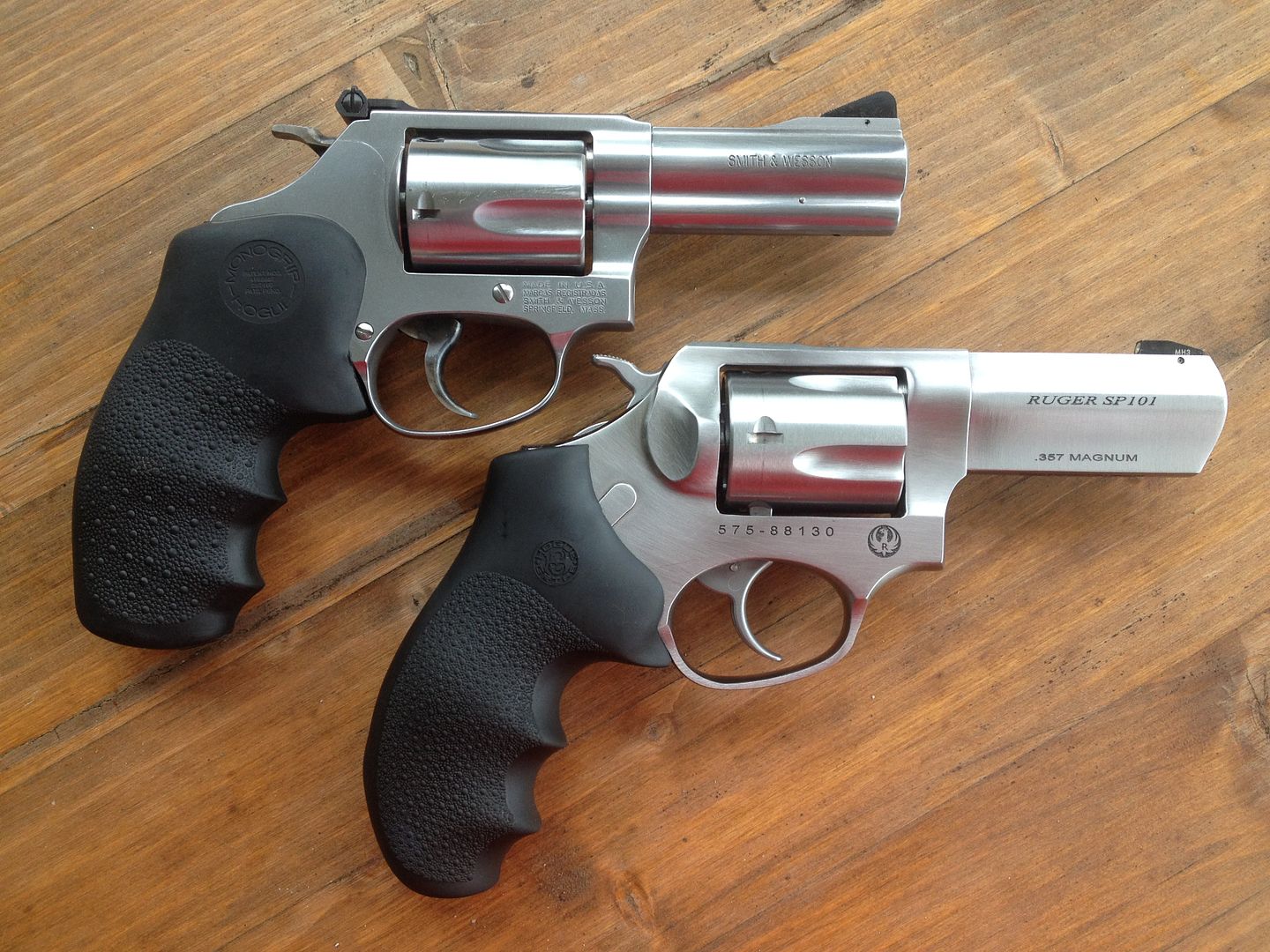
 Size and weight:
Size and weight:
The Ruger SP101 maintains the same basic size as the S&W J-Magnum frame revolvers but does it with a bit more metal. In addition to the full heavy lugged barrel, the extra metal is evident in the front portion of the frame around the barrel as well as in the slightly heavier top strap. The Ruger SP101 also uses a frame design that does not have a side plate, with the hammer and trigger parts being inserted from the top and bottom of the frame, creating a stronger frame. The SP101s forcing cone is also about 50% thicker than the forcing cone on the Model 60. There is however no free lunch and the 3" SP101 weighs in at 1.8 pounds compared to 1.5 pounds for the 3" Model 60. For concealed carry purposes the extra weight is noticeable but not objectionable.
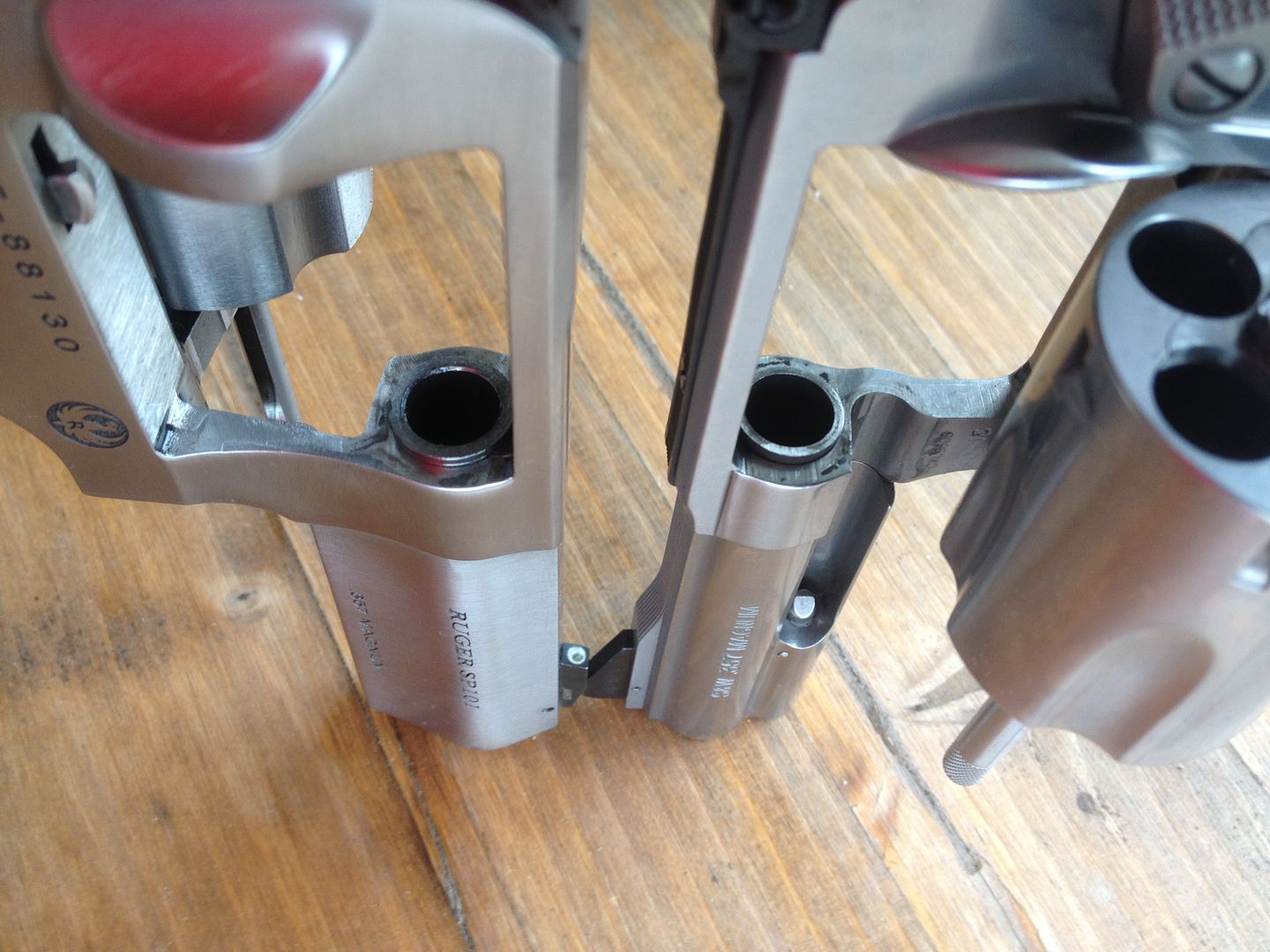 Durability with .357 Magnum loads:
Durability with .357 Magnum loads:
Due to it's comparatively light frame and the thin forcing cone, even with its steel frame, the Model 60 is intended to be shot primarily with .38 Special and carried with .357 Magnum, maintaining a very high ratio of .38 Special to .357 Magnum round count. The SP101 however should be able to tolerate a steadier diet of .357 Magnum loads due to it's slightly heavier frame, thicker forcing cone, and that was one of the primary reasons I bought one.
Accuracy:
In terms of accuracy, both revolvers are capable of one hole accuracy at 10 yards and are capable of 3" accuracy at 25 yards.
SP101 10 yards:
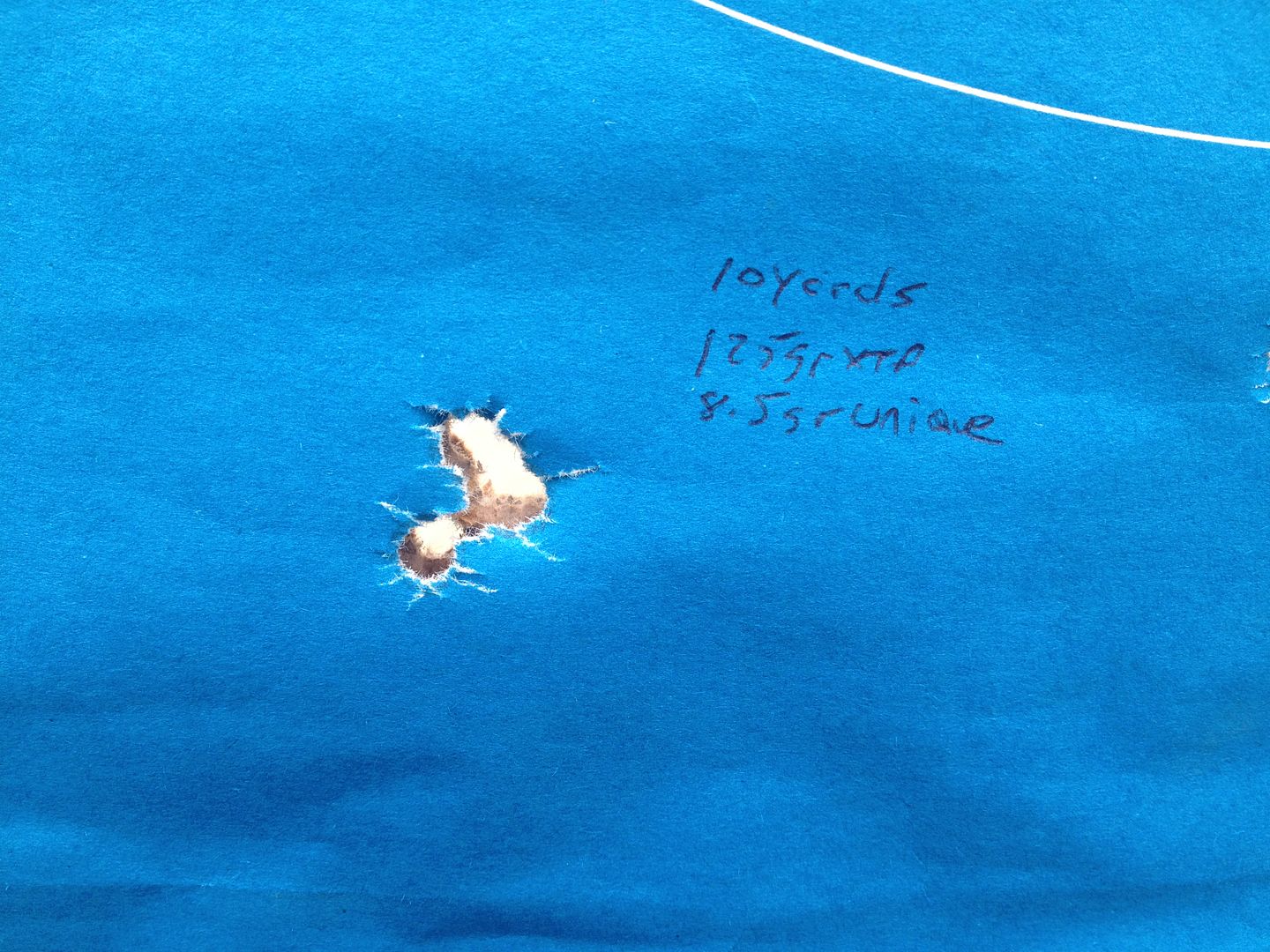
S&W Model 60, same load at 10 yards:

The SP101's fixed sights have a slightly wider rear sight notch than the fixed sights on the 2.125" Model 60. However, the adjustable sights on the 3" Model 60's J-Target frame are a big improvement over the fixed sights on the SP101. In addition to having a better sight picture, they allow adjustment to point of aim for ammunition other than the 158 gr loads both revolvers seem to be regulated to shoot to point of aim from the factory. This gives the Model 60 the ability to better utilize its potential accuracy.
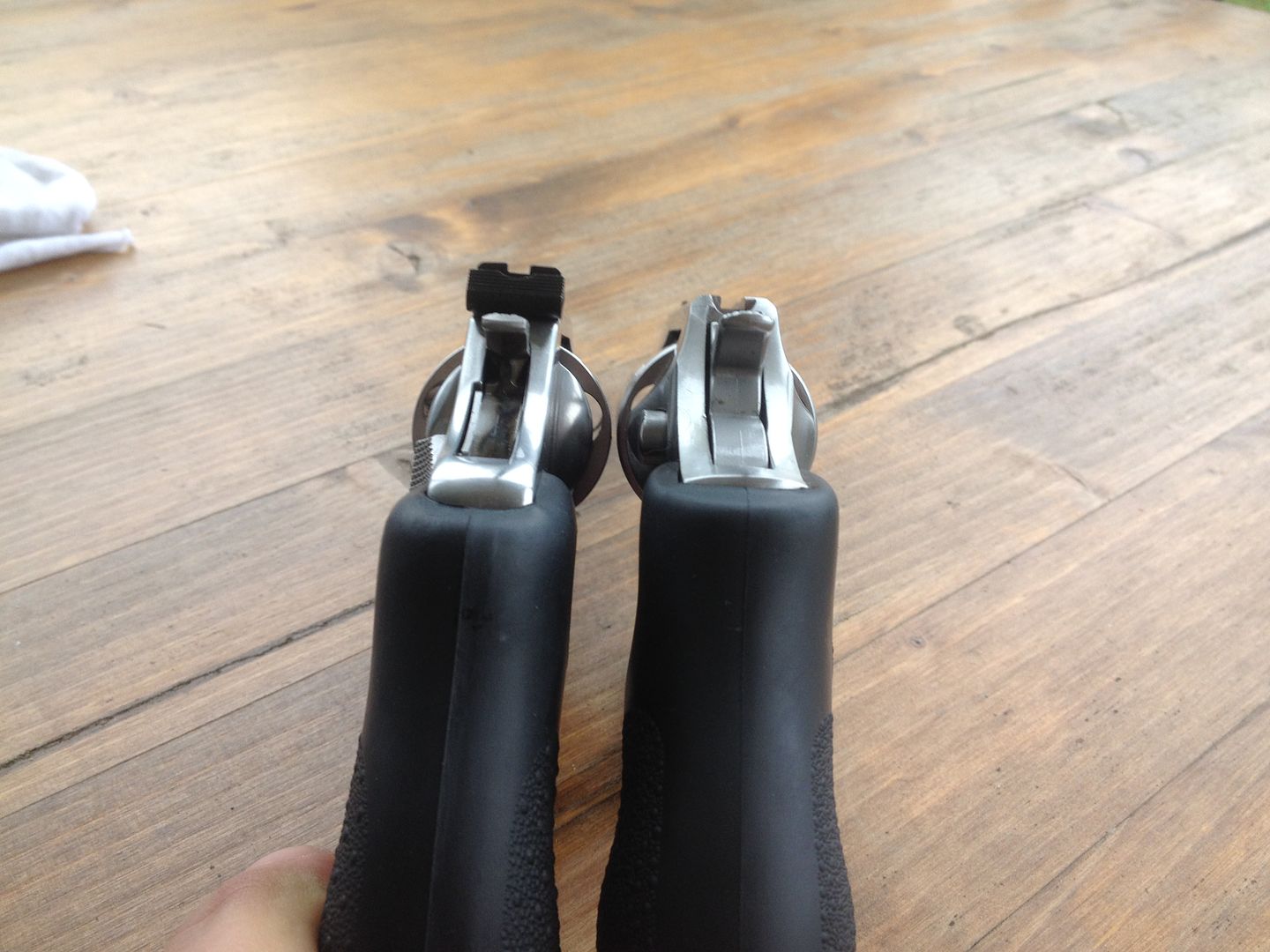
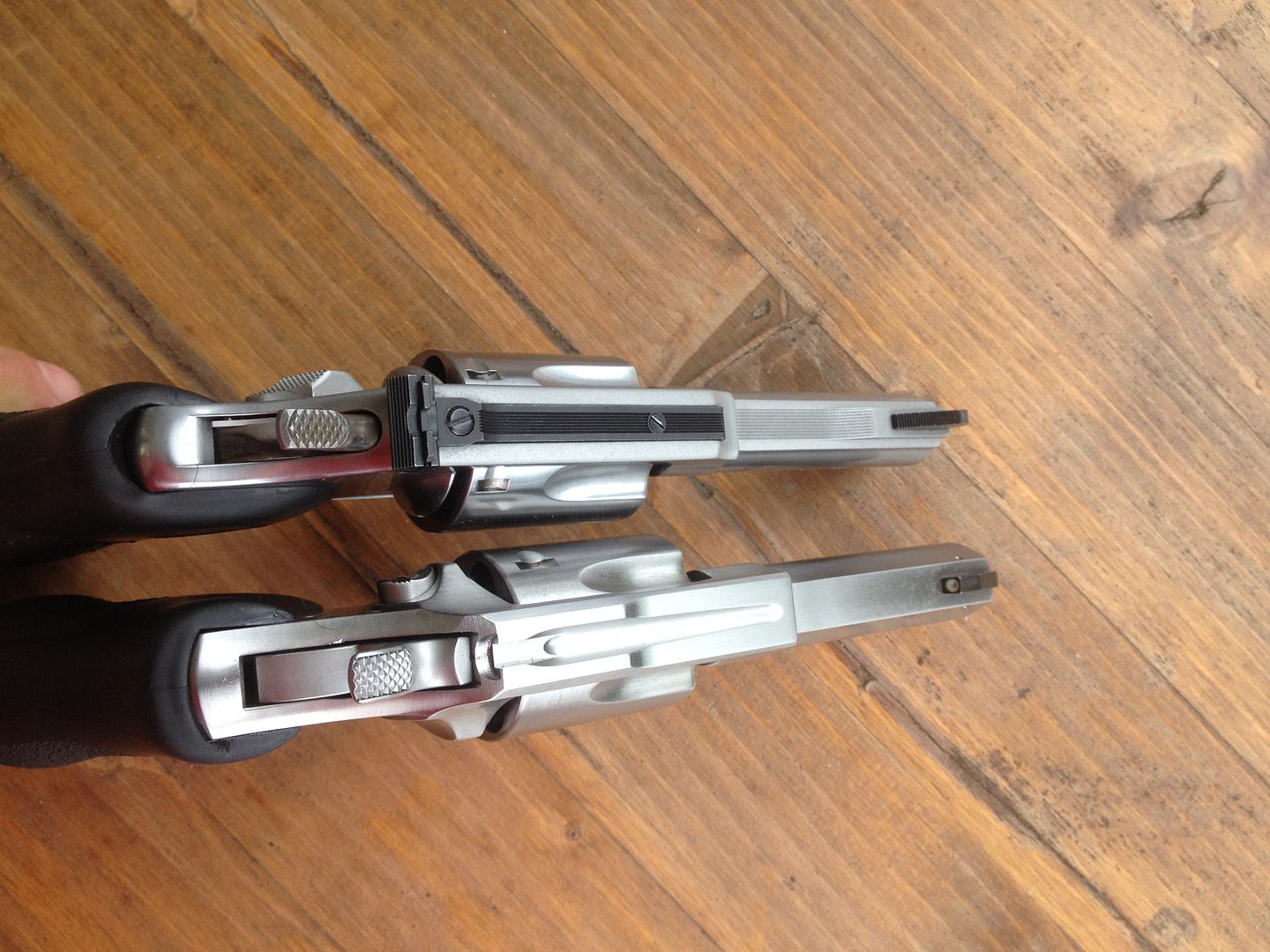 Trigger:
Trigger:
This is one of the biggest differences between the two revolvers, but it's not as simple as one being better than the other. Both revolvers vary a fair amount from the factory, and if you try several examples you'll find some that have better triggers than others.
In general however, the SP101 comes with a heavier trigger from the factory and the feel is not as refined as the trigger on the Model 60 trigger. On the other hand, it's a simple process to replace the trigger return spring with a lighter spring and it's even easier to replace the hammer spring with a lighter one. With a 12 pound hammer spring and an 8 pound return spring, my SP101 has a 3 pound single action trigger pull, compared to a 3 3/8 pound SA trigger on my 3" Model 60 and a 3 pound SA trigger on my 2" Model 60, so despite the heavier factory pull, it's fairly easy to give the Ruger a comparable trigger pull weight.
On the other hand, the "feel" of the S&W trigger is better, with a smooth and solid feel, compared to a more mechanical and rougher feel. The SP101 also has a longer trigger reset and it's a lot less positive than the S&W Model 60's trigger.
Grips:
It's a very subjective topic, but both the Model 60 and the SP101, in my opinion, suffer from rubber grips that are too small and leave the middle finger behind the trigger guard, where it gets whacked when shooting .357 Magnum loads. On both revolvers, installing a better designed grip improves the ability to shoot them well with .357 Magnum loads. The Hogue Monogrip works well for me and it lives on both my SP101s as well as all my Model 36s and Model 60s.
Overall appearance:
This is also very subjective.
The Model 60 has a mildly shiny polished finish that results from polishing with abrasives followed by a passivation process in a mild acid bath that removes any free iron molecules from the surface to improve rust resistance.
The SP101 has a brushed finish that is much flatter than S&W standard polish.
Both the SP101 and the Model 60 have full length ejector rod housings and untapered barrels, but the SP101's ejector housing take the form of a full under lug, adding additional weight to the revolver, and giving it amore modern styling, while the S&W maintains much more classic lines.
Both revolvers also use MIM technology, but the lower attention to detail on the small part finish on the SP101 make the MIM mold lines much more noticeable.
Conclusion:
Both revolvers are very enjoyable to shoot, and with decent grips make .357 Magnum loads readily controllable. Both revolvers are also very accurate, particularly by short barrel revolver standards.
In terms of durability the SP101 wins hands down, but in terms of overall quality of fit and finish, the Model 60 exudes a classy look and feel that the SP101 just can't match.
For concealed carry purposes, both are equally capable, but the Model 60 benefits from 3/10s of a pound less weight.
The SP101 is about $80 less expensive than the Model 60, but it's not enough difference to sway someone one way or the other.
 Win a FREE Membership!
Win a FREE Membership!